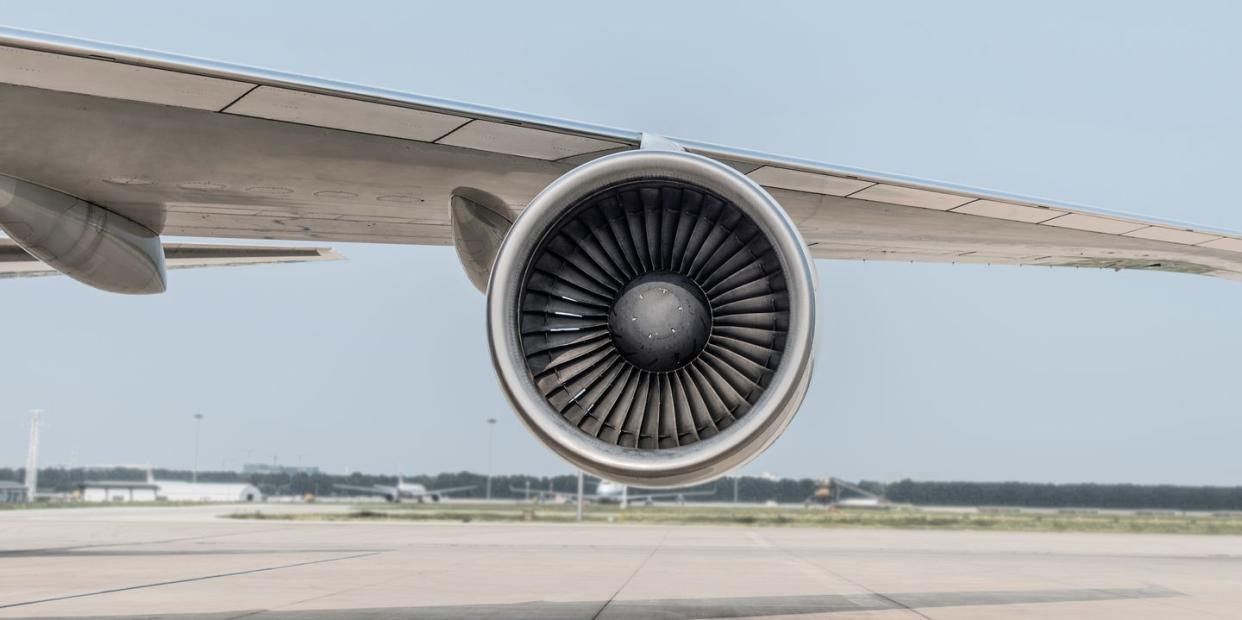Ammonia Can Officially Work As Jet Fuel

A government-startup collaboration in the U.K. finds ammonia could power jets.
The same experiments are being done for cargo ships and other applications.
The engine design uses carbon neutral heat to turn ammonia and hydrogen into jet fuel.
Could ammonia be the next great hope for carbon-neutral aircraft flight? Researchers have finished an early feasibility study of how the noxious chemical might be concentrated and used as propulsion fuel. The project is a collaboration between the startup Reaction Engines and U.K. Research and Innovation’s Science and Technology Facilities Council (STFC).
✈ You like badass planes. So do we. Let's nerd out over them together.
The prototype examined in the report uses a blend of hydrogen and ammonia that burns just like conventional jet fuel, the researchers say. Ammonia is one of the most plentiful chemicals that humans produce, because it’s massively used as a fertilizer. And while ammonia requires considerable energy to make, the process is already at an enormous scale because of how much is required by farmers around the world.
“It would have the potential to efficiently crack the ammonia fuel using heat harvested from the jet engine through Reaction Engines’ ground-breaking heat exchangers to provide a zero-carbon fuel blend of ammonia and hydrogen that burns stably just like jet fuel,” Reaction Engines explains in a press release. (Cracking is the chemical reaction that uses heat to blast complex hydrocarbons into simpler ones that are often more useful in chemistry applications.)
The release continues:
“The density of liquid ammonia allows for conventional aircraft configurations to be used and it may be possible to retrofit into an existing engine, resulting in a zero-carbon jet that could start serving the short haul market well before the 2050 target currently set by the industry.”
“As one of the nine bodies of U.K. Research and Innovation, STFC’s research seeks to understand the Universe from the largest astronomical scales to the tiniest constituents of matter, yet creates impact on a very tangible, human scale,” STFC says in its “Vision.” In this case, that means investing in next generation experimental technology that revolves around physics but includes topics across dozens of disciplines.
📩 Make your inbox more awesome.
In its release, Reaction Engines explains an idea that many “far out” energy researchers are reiterating now. “Decarbonizing the aviation industry is one of the great challenges of our age,” the company explains, but no single solution makes complete sense yet:
“Battery technology does not currently have the power density required to give a standard narrow-body jet (such as the A320 or 737) sufficient range. Hydrogen would need to be used in its deeply cryogenic liquid state, requiring new infrastructures and major changes to aircraft configurations. Synthetic fuels and biofuels require novel processes or arable land for production and leave the issue of soot emissions unsolved.”
Is energy-costly ammonia the best way forward? Well, Reaction and others argue that we need more seed ideas, not less, and the ability to heat the ammonia blend to cracking without adding more energy does give the plan an edge.
Making hydrogen requires hydrocarbons for practical applications and still isn’t up to scale, for example, so using just some hydrogen, again, gives this plan an edge. For now, the feasibility report is just a key to open the next door.
You Might Also Like


